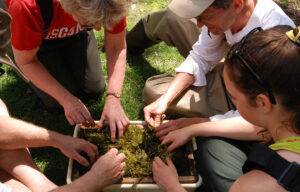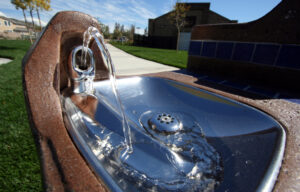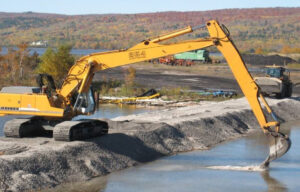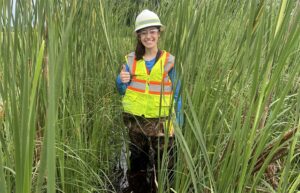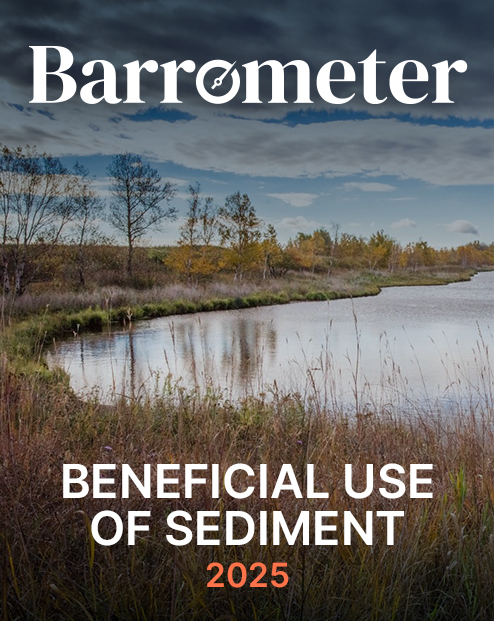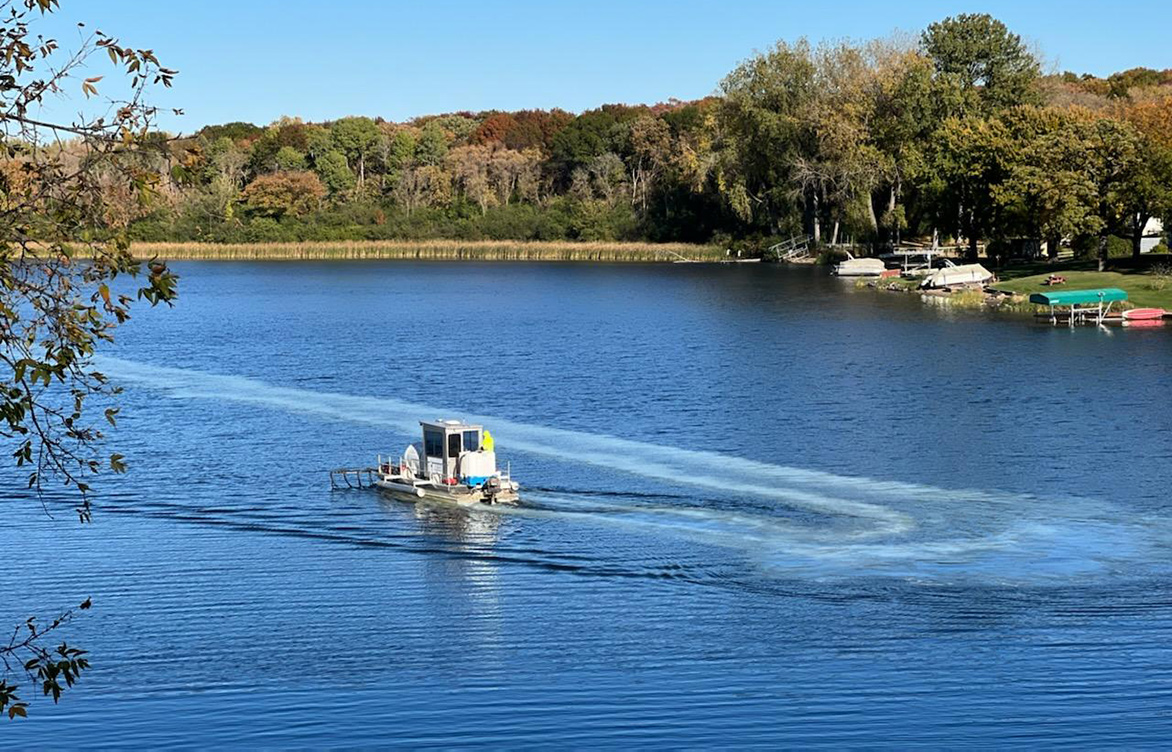 A boat applies alum in Sweeney Lake (Golden Valley, Minnesota). Thanks to persistent nutrient-reduction efforts, phosphorus in Sweeney Lake has been reduced by more than 40% since 2006. Credit: Jane McDonald-Black and the Bassett Creek Watershed Management Commission.
A boat applies alum in Sweeney Lake (Golden Valley, Minnesota). Thanks to persistent nutrient-reduction efforts, phosphorus in Sweeney Lake has been reduced by more than 40% since 2006. Credit: Jane McDonald-Black and the Bassett Creek Watershed Management Commission.
To heal nutrient-impaired lakes, apply persistence and resourcefulness
Minnesota lakes often fail to meet state water quality standards due to excessive levels of nutrients, such as phosphorus and nitrogen. In excess, nutrients can lead to uncontrolled algal growth that threatens aquatic life, limits recreation, and detracts from a lake’s public value. Lakes that fail to meet standards are placed on the Minnesota Pollution Control Agency’s impaired waters list, which is updated every two years.
Thanks to targeted water-quality improvement projects, more nutrient-impaired lakes were removed from the impaired waters list between 2020 and 2022 than in any two-year period in the previous 20 years. But since 2002, only 7% of nearly 700 nutrient-impaired lakes have been delisted. Senior Water Resources Engineer Greg Wilson has been helping Minnesota clients reduce nutrients in lakes for over 30 years. Here, Greg explains what lake managers should consider when embarking on a nutrient-reduction project.
Why have so few nutrient-impaired lakes been removed from Minnesota’s impaired waters list?
Two factors often challenge nutrient-reduction efforts. The first is the need for a reliable set of water quality data and a water quality model. Modeling allows us to identify the sources of excess nutrients and develop reduction strategies, but it takes time to gather enough data to develop a trustworthy model. The second factor is funding and community buy-in. Nutrient reduction can take years of trial and error, so projects require a strong foundation of support. While these challenges are common, they can be overcome with persistence and resourcefulness. For example, engaging stakeholders—typically adjacent landowners—early and often can invite opportunities for volunteer support.
A lake is placed on the impaired waters list, and a water quality goal has been established. What should lake managers consider first when planning a nutrient-reduction project?
Lake managers should first consider whether their water-quality monitoring program will enable them to gauge progress. Without baseline water quality data and a plan for ongoing monitoring, it will be hard to know if our efforts are paying off. An adequate and consistent monitoring program from the start allows lake managers to adjust their strategies as results come in.
What nutrient-reduction strategy, approach, or technique have you found to be highly successful?
Alum treatment—injection of liquid aluminum sulfate—is a powerful nutrient reduction strategy for reducing phosphorus in lakes. Aluminum sulfate binds permanently to available phosphorus, preventing it from being consumed by algae in the summer months. This reduces phosphorus already in the lake, as opposed to phosphorus that enters a lake from external sources such as fertilizer, sediment erosion, and leaf litter. Alum is typically applied from a small barge, using GPS to navigate the lake while injecting prescribed dosages just below the surface. With proper dosing and ongoing control of external sources, nutrient-reduction benefits of alum treatment can last 10- to 20 years. Barr has used alum treatment in many successful nutrient-reduction projects, including one on Spring Lake for the Prior Lake–Spring Lake Watershed District—the largest alum treatment project in Minnesota.
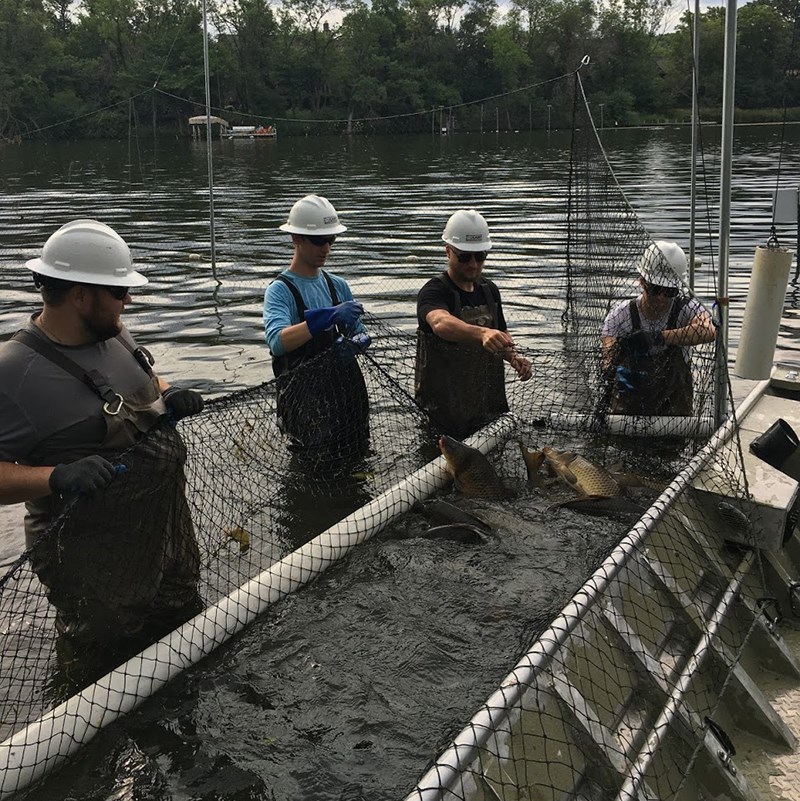
What grant or funding opportunities are out there for lake nutrient-reduction projects?
Minnesota uses sales tax proceeds for Clean Water Fund grants that support nutrient-reduction projects. Many other states have established similar funding sources and/or leveraged Section 319 funding administered through the U.S. Environmental Protection Agency, as well as conservation programs administered through the U.S. Department of Agriculture. Barr has a long history of helping our clients secure funding for their nutrient reduction projects.
To learn more about addressing lake impairments, contact us.
About the author
Greg Wilson, senior water resources engineer, has more than 31 years of experience in the areas of hydrology and hydraulics, surface water quality, GIS, limnology, and watershed and lake management planning. He performs watershed and in-lake water quality modeling, recommends management actions, and facilitates technical-advisory meetings for development of lake management plans. Greg has conducted water-quality and water-quantity monitoring and modeling and/or Total Maximum Daily Load/Water Restoration and Protection Strategy studies for nearly 100 lakes.




